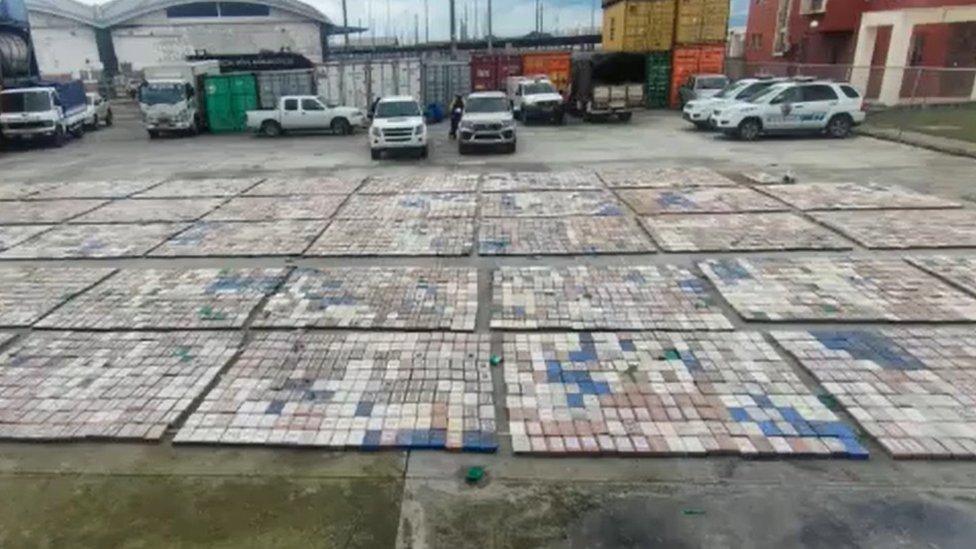Cocaine: How do you destroy two tonnes of illegal drugs?
- Published
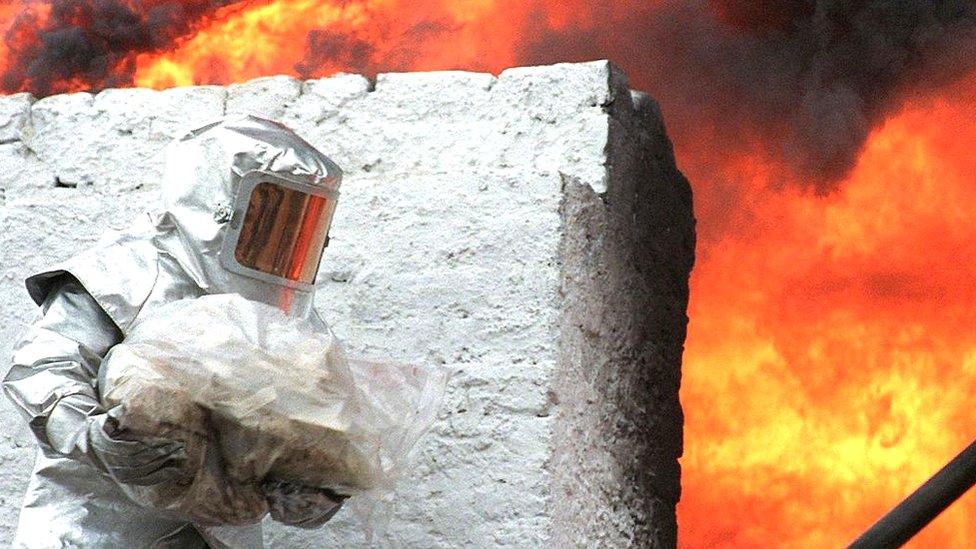
Task forces across the world are destroying tonnes of cocaine and other drugs
Cocaine, methamphetamine, cannabis and heroin are among the drugs which smugglers attempt to bring to Ireland.
In September, one gang was foiled when law enforcement in the Republic of Ireland made the largest ever drug seizure in the history of the state.
Over two tonnes of cocaine was recovered after officers stormed a cargo ship off the County Cork coast.
Irish revenue officials had made 7,407 drug seizures by the end of that month this year.
The total estimated value of the drugs seized was €237m (£206m) and €47m (£40m) worth have been destroyed.
Irish army boards cargo ship in drugs operation
The majority of those seizures have been of cocaine - a powerful, addictive stimulant that is made through the leaves of the South American coca plant.
But how are the drugs destroyed?
A general procedure applies for many EU member states, according to Tim Surmont, a scientific analyst at the European Monitoring Centre for Drugs and Drug Addiction (EMCDDA).
He said the process tends to follow this pattern:
a seizure of drugs is recorded
samples are taken for forensic analysis
in principle, after that, the seizure can be destroyed
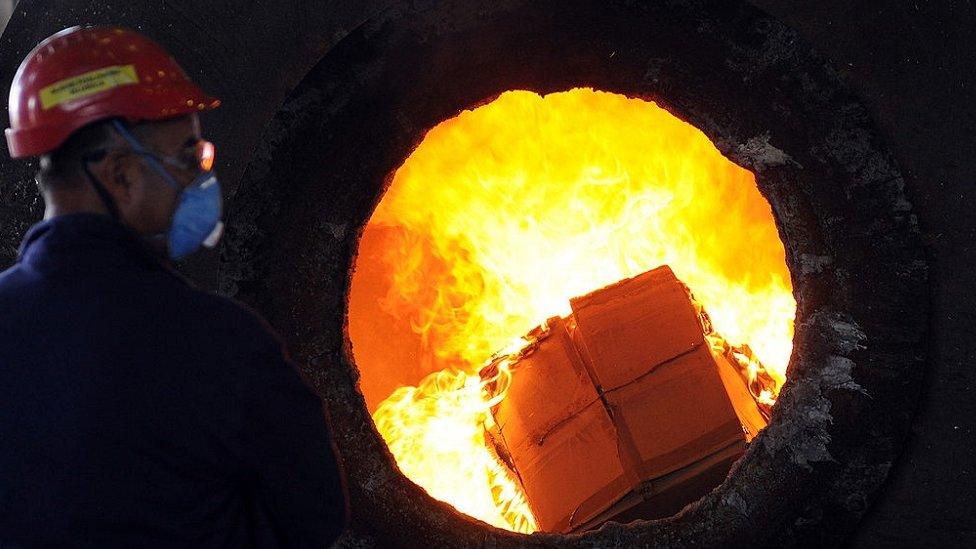
Using an incinerator to burn drugs is the preferred method in many countries
"In general this happens via incinerators as they can process larger amounts," said Mr Surmont.
That is the method used by the Police Service of Northern Ireland, which said it burns controlled drugs at a secure location which meets all environmental requirements.
However, Mr Surmont explained there can be problems with using incinerators to destroy seizures.
Authorities often wait until they have a sufficient volume of drugs to burn, as the cost for an incinerator procedure is usually not dependent on the weight to be destroyed, but on the procedure itself.
Cocaine burns poorly, with most incinerators only capable of processing a tonne or two each day.

Drug disposal is a high-security operation, such as in this Taipei warehouse
That means the drugs require specialised storage in a safehouse - with all the associated security risks and manpower that entails - until a larger bulk amount can be destroyed at once.
Larger loads are not necessarily an ideal situation either, as is the case at the Port of Antwerp in Belgium, where the sheer volume of drugs seized means authorities cannot destroy them quick enough, leading to serious ramifications.
Customs officials at the port seized about 110 tonnes of cocaine in 2022, a record amount.
With news of warehouses brimming with cocaine, the Belgian government has had to significantly increase its capacity to burn the drugs as well as invest in additional secure storage facilities.
But that has not deterred some opportunists.
Watch: Nick Beake investigates how Antwerp became the cocaine gateway to Europe
This month Belgian police intercepted a gang of armed men near the port.
It was believed they might have been attempting to retrieve a shipment of seized drugs, reported local media.
What is the alternative to burning cocaine?
More than 200 tonnes of cocaine was seized in Ecuador in 2021, far exceeding the country's incineration capacity and prompting the government to request assistance from the United Nations Office on Drugs and Crime (UNODC).
To address the challenge, UNODC - which develops disposal guidelines for many countries - advised a rapid, environmentally-friendly method called encapsulation.
"Cocaine, cement, sand and water are mixed in a special ratio and used, for example, to build concrete platforms for storage facilities at a waste disposal plant," the UNODC said.
"During setting, the cement reacts chemically with the other material present and forms a stable, hard and impenetrable matrix."
That method prevents the cocaine seeping into the ground, polluting the environment, which is a concern when burying or burning the drug at lower temperatures.
"While the destruction of 10 tonnes of cocaine can take up to two weeks, the same amount can be encapsulated safely within a day," the UNODC added.

Construction workers pour the material obtained by the encapsulation method, which consists of the destruction of cocaine in mills
In 2022, Irish officials made more than 10,000 drug seizures.
The MV Matthew seizure was supplied by a "murderous" South American cartel group, according to Garda (Irish police) Assistant Commissioner Justin Kelly.
The drugs were believed to be bound for Ireland and other parts of Europe, indicating the island's strategic role in the global drug trade.
An Garda Síochána (the Irish police force) said the drugs it seizes are destroyed in a "safe and secure manner" whenever they are "no longer required for evidential purposes".
But with Irish Revenue statistics highlighting the volume of drugs remaining in warehouses across the country, officials could soon find themselves facing the same struggles as their European partners.
Related topics
- Published16 March 2023
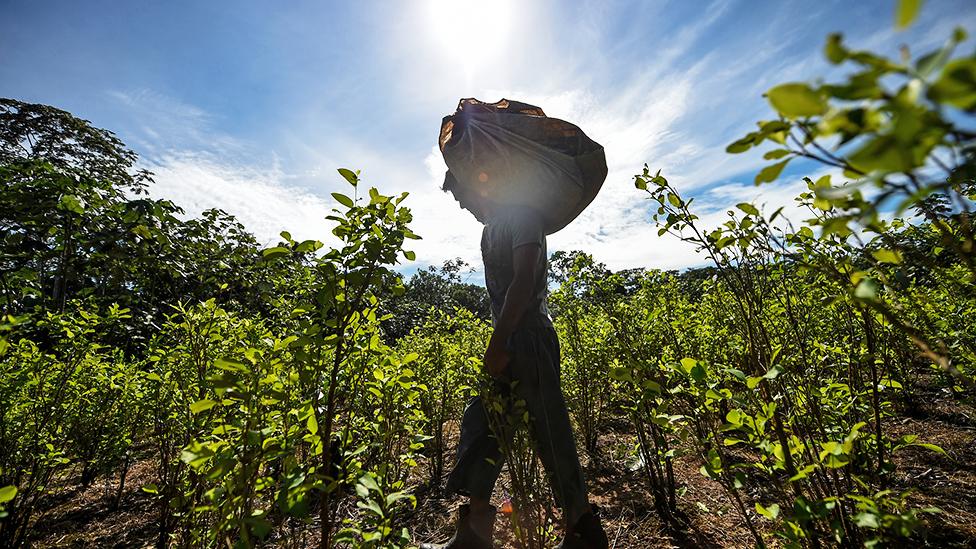
- Published3 August 2018

- Published16 December 2022
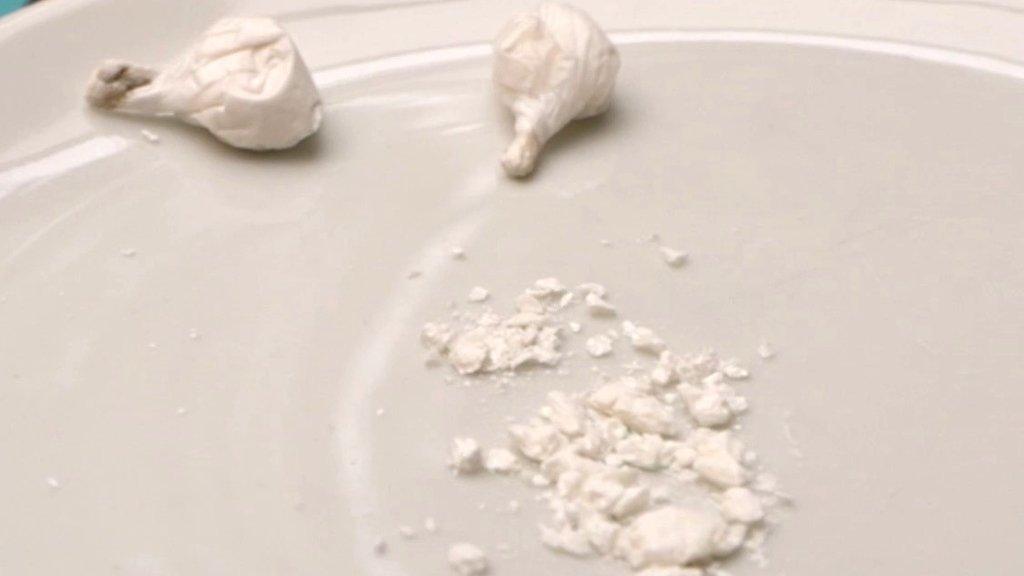
- Published27 February 2023
